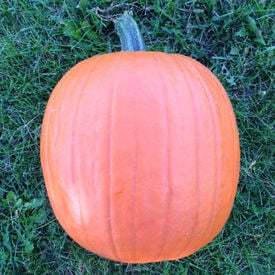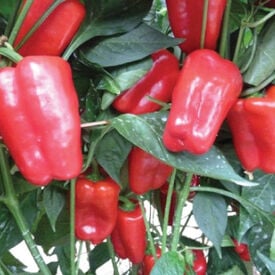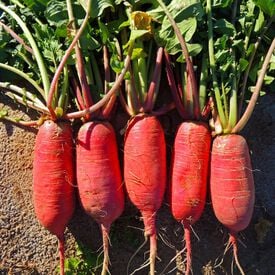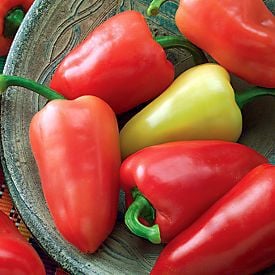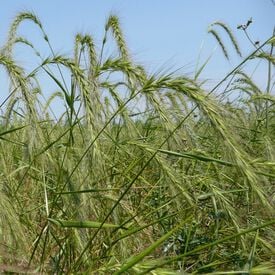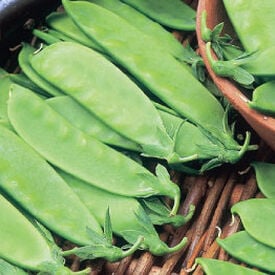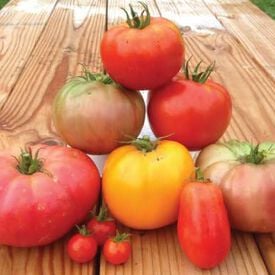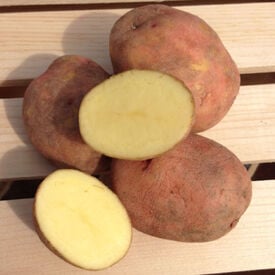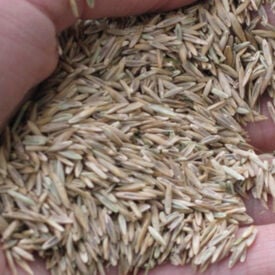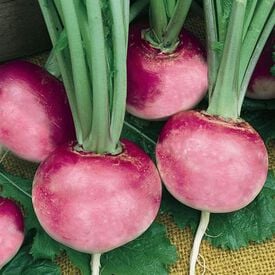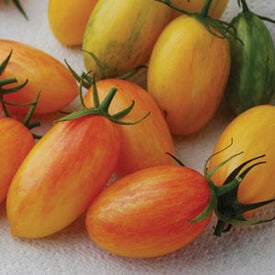True Watercress is a delicious highly nutritious aquatic herb. This watercress has a wonderful fresh peppery-tasting flavor. Being semiaquatic, this cress is a creeping perennial whose leaves are popular in salads, sandwiches and as a garnish. True Watercress grow rapidly in in damp soil and can be grown in pots of soil placed in a tub of water if water is changed weekly.
Interior texture is smooth and dense with bright white color, even when roots get large. Exceptional quality and taste when picked young, but still tasty if allowed to sit in the garden longer, giving gardener an extended harvest opportunity.
The Lunar White is a rare white carrot with high yields! This is a very productive carrot with creamy white roots. The Lunar White has a mild, but delicious flavor with small core.
The Connecticut Field pumpkin is a historic heirloom variety dating back to the 1700s, traditionally grown by Native Americans and among the earliest cultivated pumpkins in the United States. It produces large, round, bright orange fruits with shallow ribbing, typically weighing 15–25 pounds. Well-suited for gardens across much of North America, it thrives in full sun, well-drained soil, and requires ample space for its long vines to spread. With a maturity time of about 100–110 days, this variety benefits from consistent watering and mulching to retain soil moisture and suppress weeds. Connecticut Field pumpkins are widely used for carving, seasonal decoration, and in cooking—especially for pies and purees—thanks to their classic shape and flavorful flesh.
Captain Jack is an extra-large, dark orange Jack O’Lantern-type pumpkin. Its thick flesh and flat bottom enables the fruit to stand on its own. Extremely large, thick embedded handles match the large size of this pumpkin. Large and vigorous plants can support several fruit. Grows to 35-45lbs. in size.
The Red Petite Bell Pepper is a red mini bell pepper that is bursting with flavor! This high yielding mini bell pepper is sweet and ripens to a rich red when mature. This pepper variety grows to 2-3 ounces, which is the perfect snack sized pepper. The Red Petite Bell is an excellent pepper for market selling or fresh eating!
The China Rose Radish is a tasty rose colored radish with peppery undertones. This long radish variety with 5 inch long roots is one of the oldest heirloom radishes around. The China Rose is a very hardy type that can be grown year round.
The Mariachi Pepper is a 2006 All American Selection winner! This colorful pepper has just a bit of mildly hot heat. The compact 18-24" plants yield loads of 4", coned shaped peppers that change brilliantly from creamy yellow to bright red all summer. Avg. 4,690 seeds/oz. Packet: 10 seeds.
The Early Doll Tomato is a bright red, juicy tomato that is an improvement of the Quick Pick, making it a good slicing variety. This variety is a great tomato to grow in Northern areas where the season is short, however this tomato plant is also great for Southern locations where you can harvest the crop before insects and disease start to take over.
How to Plant:Till ground before planting. Then firm ground to make flat. Use a seed broadcaster to spread seed evenly over the ground. Next flatten ground again to secure seeds into soil.How to Plant:Till ground before planting. Then firm ground to make flat. Use a seed broadcaster to spread seed evenly over the ground. Next flatten ground again to secure seeds into soil.Seeding Rates:Sowing SeasonSeeding DepthSeeding Rate (1,000 Sq. Ft.)Seeding Rate (1 Acre)AmaranthSpring & Summer1/4 - 1/2"1 lb.15-25 lbs.BarleySpring & Summer3/4 - 2"2 lbs.75-125 lbs.BuckwheatSpring & Summer1/2 - 1 1/2"2-3 lbs.50-100 lbs.MilletSummer1/2 - 1"1/4 lb.6-10 lbs.OatsSpring & Summer1/2 - 1 1/2"4 lbs.100-150 lbs.Rye, WinterAnytime3/4 - 2"4 lbs.75-125 lbs.RyegrassAnytime0 - 1/2"1 lb.25-50 lbs.SudangrassSpring & Summer1/4 - 1/2"1-2 lbs.35-65 lbs.WheatSpring1/2 - 1 1/2"4 lbs75-150 lbs.Sowing SeasonSeeding DepthSeeding Rate (1,000 Sq. Ft.)Seeding Rate (1 Acre)AmaranthSpring & Summer1/4 - 1/2"1 lb.15-25 lbs.BarleySpring & Summer3/4 - 2"2 lbs.75-125 lbs.BuckwheatSpring & Summer1/2 - 1 1/2"2-3 lbs.50-100 lbs.MilletSummer1/2 - 1"1/4 lb.6-10 lbs.OatsSpring & Summer1/2 - 1 1/2"4 lbs.100-150 lbs.Rye, WinterAnytime3/4 - 2"4 lbs.75-125 lbs.RyegrassAnytime0 - 1/2"1 lb.25-50 lbs.SudangrassSpring & Summer1/4 - 1/2"1-2 lbs.35-65 lbs.WheatSpring1/2 - 1 1/2"4 lbs75-150 lbs.Cover Crop Calculator:Calculate the amount of cover crop neededCover Crop Calculator:Calculate the amount of cover crop needed1 Acre = 43,560 square feet, or 435'x100'Weight Conversion:1 Pound = 16 Ounces
The Mandan Wildrye Grass is a fast growing, cool-season, perennial bunch-grass that is a great choice for erosion control. It can be planted early or late fall, but for best results, Mandan Wildrye should be planted in the spring. This hardy grass performs well on most soil types. The Mandan Wildrye produces and brown seed head and can grow up to 4 feet! Uses: Erosion Control, Forage, Green Manure, Nitrogen Scavenger, No Till, Organic Matter (Biomass), Weed suppression
The Oregon Giant Pea plant has excellent yield potential. This variety is a home garden favorite that offers a great flavored pod if eaten while young and its peas have a great sugar flavor!
The Heirloom Blend is a collection of 8 distinctively different heirloom tomato varieties! If you like the fresh taste of heirloom tomatoes, then try this beautiful rainbow blend of tomatoes. We have hand selected our 8 favorite heirlooms and blended them together to create a wonderful assortment of mouth-watering, colorful, and multiple use tomatoes. The Heirloom Blend includes Marglobe Supreme, Black Krim, Rutger, Pink Brandywine, Cherokee Purple, Golden Jubilee, Sweetie Cherry and Roma.
SPRING SHIPPING - Certified - The crisp, yellow flesh of the Red Gold Potato is great for making fries! This potato variety produces medium sized tubers with light red skin wrapped around a delicate yellow flesh that has the texture and flavor that no other potato has! Red Gold is a semi-moist, high yielder and shows some resistance to scab. Red Gold potatoes are excellent steamed, boiled, baked, fried, mashed, roasted or scalloped! This delicious red skinned potato was named after the Red River, which runs between North Dakota and Minnesota.
The Frontier Grazer Rye is a grain that makes a great cover crop to prevent erosion and build up organic matter in the soil! Plant this variety early to late fall; in mild climates fall through early spring. The best choice for fast, cool-season germination. The Frontier Grazer Rye captures soil nutrients in the fall to release in spring when worked into the soil. Uses: Erosion Control, Green Manure, Nitrogen Scavenger, No Till, Organic Matter (Biomass), Weed Suppression<
The Copia Tomato is a yellow and red striped beefsteak variety that is a cross between the Green Zebra and Marvel Striped. This sweet and juicy tomato is perfect for slicing and adding to salads and sandwiches for a sweet and tangy kick! This beefsteak can weigh 10-12 ounces each.
The Pink Beauty Radish is named after its beautiful, uniformed light pink exterior that is crisp and jam packed full of flavor. This round beauty has a bright white flesh that is crunchy and with the perfect radish taste. This quick-growing variety is a great addition to any garden! The Pink Beauty will add a nice pop of color to any garden or dish.
The Blush Tomato is part of the beautiful and tasty Artisan tomato collection and has a sweet, fruity flavor that is great for fresh eating. The delicious bright yellow tomato produces red marbling stripes when mature. The attractive Blush mixes beautifully with the other Artisan tomatoes.



